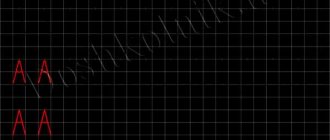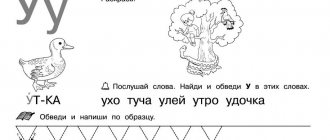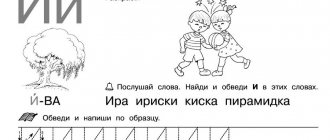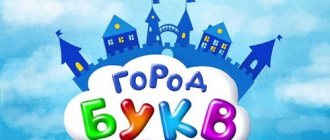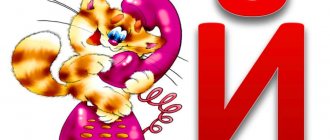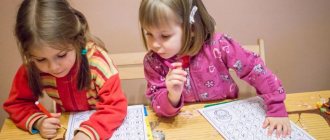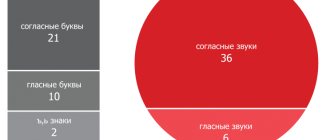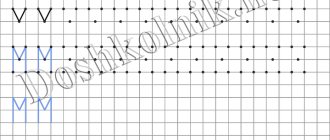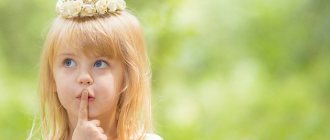Learning the letter A by playing - What does the letter A look like?
ATTENTION!
REGISTER FOR COURSES! RECRUITING! More details on the page: https://academy.multi-mama.ru/product/multi-predlozhenie/
It is important to arouse interest in the child and support him on the path of knowledge. Start learning letters as early as possible in a simple playful way. When you walk with your child, communicate, play with him, pay his attention to the letters. They surround us everywhere. Pay attention to what the letter A looks like. A stepladder, two logs and one more between them. Maybe some tree grows in the shape of a letter or something? Eiffel Tower?
It is important that the child has positive emotions while learning letters. He may be happy that mom or dad is telling him something important. Tell him how letters help people. What you can read yourself, determine what street you are on, find which cartoon to watch yourself.
Each person has several channels of information perception: auditory (hearing), visual (picture), kinesthetic (touch) and motor (scheme, algorithm). Special tests will help determine which channel of perception is more developed in each individual person. Whether this is genetically determined or formed depending on the environment surrounding the child is not yet clear. I agree with the opinion that a child can be helped to develop all channels of perception, so it is very important that he: - hears the letter; - saw an image - a picture; — touched it in the real world; - I drew it.
Why is the letter A with pictures in front of the word better remembered?
For a child, letters are an abstraction, something incomprehensible. It is important that in addition to the letter itself, he also remembers the image - the picture. We all remember our first alphabet, there was a picture next to each letter. It’s even better if the child has a real-life example. For example, on our card there is the word Lampshade. Find it in your home and let your child look at it. You can literally touch and test “tooth” something edible starting with the letter A, for example, watermelon, apricot, pineapple, orange. You can smell the aster. Cars and buses surround city residents everywhere, and they drive on asphalt. Draw the letter A on the pavement with chalk while walking.
Actors and actresses star in films, acrobats and arena perform in circuses. Perhaps you have an aquarium in your house? Find a practical application for the abstract letter. Have your child paint with watercolors and note that the watercolor begins with A. Let him paint A with watercolors with your help or on his own, if he can. Such an experience will penetrate into the very depths of the child’s consciousness and his brain will absorb this important information about the first letter of the Russian alphabet, which also begins with A.
Does your child like to look at animals: the words stork and shark would be suitable. Modern houses on the street are full of antennas, draw your child’s attention to them and he will automatically remember the letter A when he sees the antenna. There are also many inscriptions around that contain the letter A, for example, Pharmacy. Or maybe your child likes to listen to music? Then draw his attention to musical instruments on A, for example, Harp, Viola. What methods do you use to easily memorize information?
How easy is it for a child to learn the letter A at 3-4 years old and at 5-6 years old?
A child has an absorbent mind. This is confirmed by Maria Montessori, who devoted her life to raising children. The period of special receptivity of a person to learning letters is from 0 to 6 years. However, the child must be ready to learn and tuned in to it. There are children who, as soon as they begin to speak, are already interested in letters, of course, if their parents invited them to study them and created positive reinforcement for this event, that is, they were extremely happy when the child first began to show interest in letters.
There is an opinion that initially a child must master physical training, learn to deftly control his body, that is, master climbing, crawling, walking on steps - develop gross motor skills, and also develop fine motor skills - movements with the tips of his fingers: modeling, drawing, fingering small objects. And only then can you teach letters. That is, by the age of 5-6 it will be normal.
From my personal experience, I believe that everything needs to be done simultaneously and in parallel, following the desire and interest of the child. That is, you can start learning letters and showing them when the child is not even a year old. At 3-4 years old, a child should normally already have a fairly large vocabulary and maintain a conversation. Perhaps this is the right period to start getting acquainted with letters?
MAGAZINE Preschooler.RF
Summary of a lesson on teaching literacy using ICT Topic: “Sound and Letter A” Goal: To consolidate the correct pronunciation of the sound [a], to introduce the letter A. Objectives: educational: - clarify the pronunciation of the sound [a]; - determine the position of a sound in a word; developing: - teach children to isolate the sound [a] from the composition of syllables, words and sentences; — develop fine, gross and articulatory motor skills; — teach children to change the strength and pitch of their voices; — develop phonemic hearing and perception; Materials: multimedia projector, presentation “Sound and the letter A”, handouts, clip “Letter A”. Slide No. 1 (MultiKnow, Pinocchio). The teacher plays on this slide. Slide No. 2 (Letter A, plot pictures). Slide number 3 (Letter A, watermelon, text of poetry). The teacher reads a poem: “A” is the beginning of the alphabet. That’s why she is famous. And it’s easy to recognize her: She puts her legs wide. (The teacher invites the children to draw the letter A: put their legs wide, fold their arms under their chest, head straight). The letter A appears on the screen. Slide No. 4 (Letter A, text of the poem). Educator: - Guys, listen to another poem: Here are two pillars diagonally, And between them there is a belt. Do you know this letter? A? In front of you is the letter "A". Slide No. 5 (Chevostik, didactic game: “Flowers”) - Guys, now let’s play: put our ears on the tops of our heads, open our eyes wider, pronounce the names of the pictures loudly, if you hear the sound A in the names of the flowers, clap your hands. (Pictures appear on the screen, children pronounce their names, listen, if there is a sound A, clap their hands). Slide number 6 (Big and small letters A). - We see the letter A, and we hear the sound A. The teacher suggests taking a good look at the letters and saying what objects they resemble. Slide number 7. (Chevostik, text of tongue twisters). - Guys, what are tongue twisters for? Children's answers. (The teacher suggests to the children: arrange a competition in the pronunciation of tongue twisters.) The teacher plays out the situation with a bouquet floating on the screen. (a bouquet of flowers for the children’s efforts). Slide number 8. (Image of a crying girl, letter A, Chevostik). - Guys, what is the girl doing? How is she crying? Children's answers. - Say the sound A, how long can you pronounce it? Does your mouth have barriers when you pronounce the sound A? - Guys, when there are no barriers to sound and it can sing, such a sound is called a vowel. This means that the sound and the letter A are vowels. Slide number 9 (Text, physical exercises). The teacher invites the children to repeat the movements in the text after her. Slide number 10. (Image of the task). - Guys, find a bird on your leaves. What is it called? What sound is heard at the beginning of a word? Find the word next to the stork, and in this word the letter A. Underline in red. - Now color the letter red (on the screen the teacher’s words are duplicated by the action). - Now circle the letter A in the boxes. Slide No. 11. (Chevostik, text of the task, image of the task, floating circles). Educator: name each picture, listen to the sound, circle only those pictures in the name of which the sound A is at the beginning of the word. (Guys can check the correctness of their actions: the correct answer appears on the screen). Slide number 12. (Chevostik, text, house with a red roof, vowels). - Educator: guys, from now on we will put all the letters that are sung and called vowels in a house with a red roof. Find the letter A in the house. Shade it red. Think of words with the sound A.| Next > |
